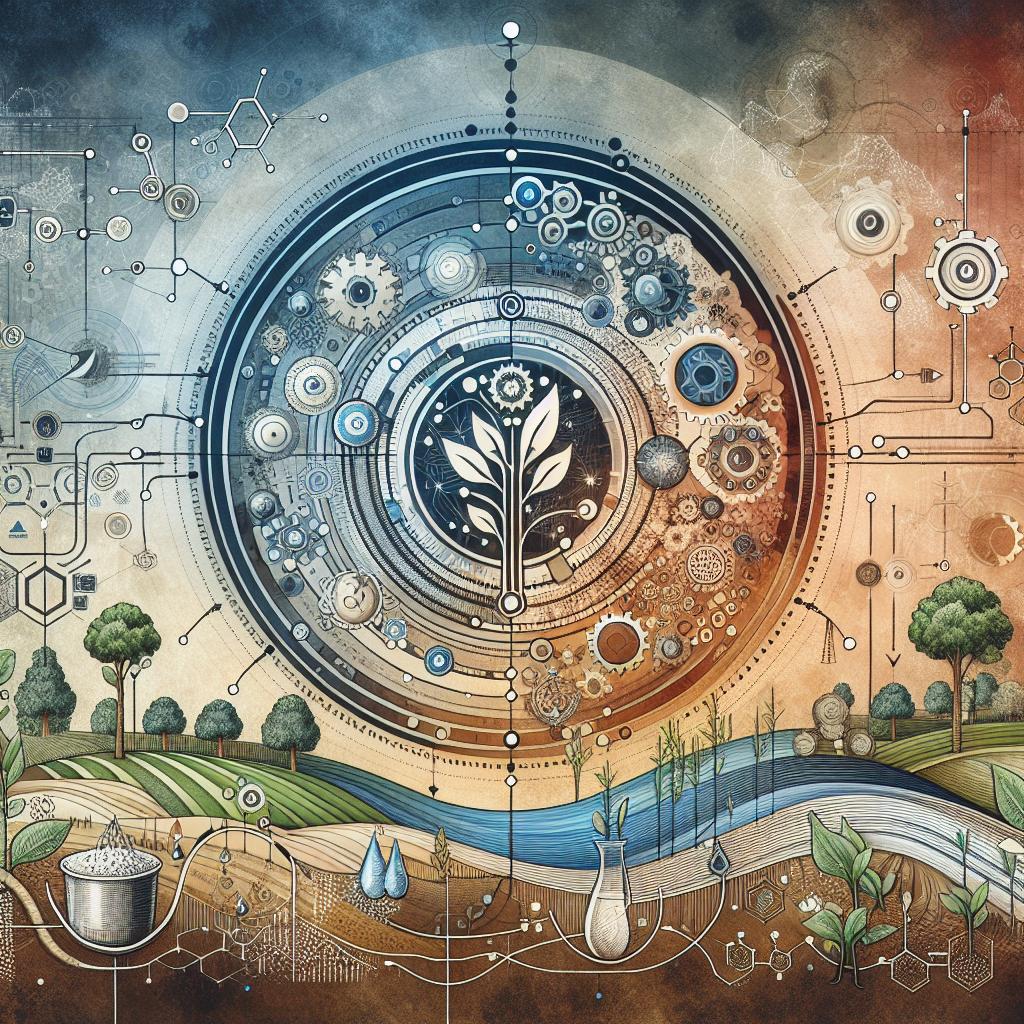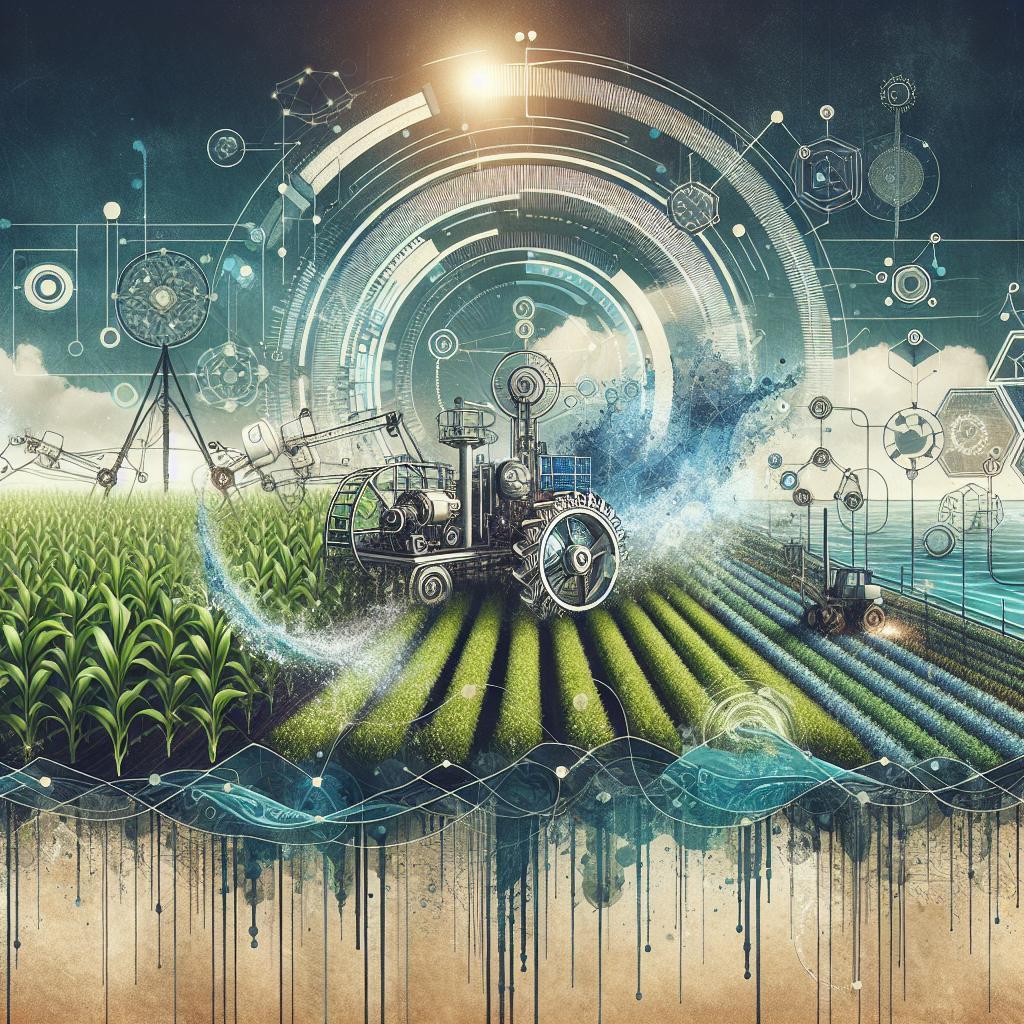This post may contain affiliate links which means I may receive a commission for purchases made through links. Learn more on my Private Policy page.
Harvesting Success: A Friendly Guide to Monitoring and Adjusting Your Farm Irrigation System for Optimal Results
Welcome to the heart of your farm, where lush fields and bountiful crops bloom under the right amount of sunshine and just the right touch of moisture. As a farmer, you know that water is not merely a resource; it’s the lifeblood of your harvest. However, finding the perfect balance in irrigation can often feel like chasing a mirage. Fear not! In this friendly guide, we’ll explore the art and science of monitoring and adjusting your irrigation system to keep your plants happy and thriving. Whether you’re a seasoned pro or a budding agriculturalist, we’ll walk you through practical tips and clever techniques that can transform your approach to irrigation. So grab your boots, roll up your sleeves, and let’s dig deep into the world of optimal irrigation!
Understanding Your Soil Needs for Precision Irrigation
To achieve the highest efficiency in your irrigation system, it’s vital to truly understand the unique needs of your soil. Different soil types possess distinct characteristics that influence water retention and drainage, affecting how much moisture is available to crops. Start by categorizing your soil into one of the following main types:
- Sandy Soil – Drains quickly and requires more frequent watering.
- Clay Soil – Retains moisture well but drains slowly, necessitating less frequent irrigation.
- Silty Soil - Holds nutrients and moisture effectively, balancing irrigation needs.
Once you’ve identified your soil type, consider conducting regular soil moisture tests to fine-tune your irrigation strategies. By measuring moisture levels at various soil depths, you can determine when and how much water to apply. It’s beneficial to keep a record of your observations in a simple table to visualize trends, such as:
| Test Date | Soil Depth | Moisture Level |
|---|---|---|
| 2023-09-01 | 0-6 inches | 30% |
| 2023-09-15 | 0-6 inches | 25% |
| 2023-09-30 | 0-6 inches | 20% |
Utilizing this data will enable you to adjust your irrigation schedule effectively, ensuring your crops receive just the right amount of water they need to thrive without wastage. Tailoring your irrigation practices based on soil conditions is a key step toward sustainable farming and achieving optimal crop yields.

The Power of Technology in Irrigation Monitoring
In an era where precision agriculture is revolutionizing farming, leveraging technology in irrigation monitoring has become a game changer for farmers seeking to maximize their yield while conserving resources. Smart sensors and IoT devices actively track soil moisture levels, weather conditions, and crop needs, allowing for real-time adjustments that optimize water usage. This data-driven approach facilitates a meticulous understanding of crop requirements, enabling farmers to tailor their irrigation strategies effectively. With a simple interface available on mobile devices, monitoring has become accessible, empowering farmers to make informed decisions anytime and anywhere.
Moreover, the integration of advanced analytics and machine learning algorithms enhances the ability to predict irrigation needs based on various parameters like crop type, growth stage, and local climate patterns. This predictive capability can significantly reduce water waste and increase efficiency, leading to sustainable farming practices. Here are some key benefits of utilizing technology for irrigation monitoring:
- Resource Efficiency: Reduces unnecessary water usage.
- Cost Savings: Lowers operational costs by minimizing resource waste.
- Crop Health: Promotes optimal growth conditions for healthier plants.
- Data Insights: Provides valuable insights for improving overall farm management.

Seasonal Adjustments: Timing is Everything
Understanding the seasonal patterns in your region is vital for efficient irrigation management. Farmers should closely monitor rainfall trends and temperature fluctuations throughout the year. By doing so, you can strategically adjust your irrigation schedule to align with the water needs of your crops during different growth phases. Here are a few key factors to consider:
- Growing Season: Identify the critical periods for each crop.
- Precipitation Patterns: Track average rainfalls and adjust watering accordingly.
- Temperature Changes: Effectively manage water loss through evaporation on warmer days.
In addition to monitoring these factors, employing a reliable irrigation management system can enhance your responsiveness to seasonal changes. Utilizing soil moisture sensors can provide real-time data on moisture levels, indicating when plants truly need watering versus when they can thrive on natural rainfall. A simple irrigation schedule table can help you maintain organized watering times, ensuring crops receive consistent and adequate moisture throughout the year:
| Month | Watering Frequency | Adjustments Needed |
|---|---|---|
| January | Every 10 Days | Decrease if rainfall is significant |
| April | Every 5 Days | Increase for planting season |
| July | Every 3 Days | Maximize to combat heat stress |

Best Practices for Regular System Maintenance and Upgrades
Maintaining and upgrading your farm irrigation system is crucial for ensuring optimal performance and efficiency. Regular checks on key components, such as pumps, pipes, and emitters, can prevent costly breakdowns and inefficiencies. Schedule a routine maintenance check at least twice a year to:
- Inspect and clean filters to ensure maximum water flow.
- Check for leaks in pipes and fittings that can lead to water wastage.
- Calibrate sensors for accurate soil moisture readings, which help adjust irrigation schedules.
- Update software for automated irrigation systems to benefit from the latest features and fixes.
Moreover, consider documenting your maintenance efforts and creating a tracking system to monitor any recurring issues. Keeping a detailed log can significantly improve your ability to make informed adjustments over time. Additionally, planning for upgrades should be proactive rather than reactive. Reassess your irrigation needs with each growing season, and if your current system isn’t meeting those needs, explore options for drip irrigation or smart controllers that could enhance water efficiency. Here’s a simple comparison table to guide your upgrade decisions:
| System Type | Water Efficiency | Initial Cost | Maintenance Required |
|---|---|---|---|
| Drip Irrigation | High | Moderate | Low |
| Sprinkler System | Moderate | Low | Medium |
| Smart Controller | Very High | High | Low |
Insights and Conclusions
As we come to the end of our journey through the world of farm irrigation, remember that the path to optimal results isn’t just about the equipment you use, but also about the care and attention you give it. Monitoring and adjusting your irrigation system may seem like a daunting task, but with the right strategies and a little patience, you can ensure your crops receive the nourishment they need to thrive.
Just like a well-tended garden, your agricultural success flourishes with every tweak and adjustment you make. Embrace the opportunity to learn from both your successes and challenges; after all, farming is as much an art as it is a science. Harness the power of technology, stay attuned to the needs of your environment, and don’t hesitate to reach out to your fellow farmers for tips and camaraderie.
So roll up your sleeves, keep those spigots turning, and let your fields be a testament to your dedication. Here’s to bountiful harvests and sustainable practices. May your irrigation systems flow as freely as your passion for farming! Until next time, happy cultivating!
This post may contain affiliate links which means I may receive a commission for purchases made through links. Learn more on my Private Policy page.

